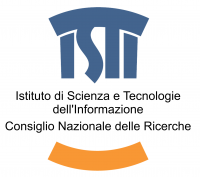Giovanni Azzena
The advent of Geographical Information Systems (GIS) and Geographical Databases in the field of geo-topographic digital mapping, imposed a deep reflection to researchers and professionals working in territory sciences. One of the first problems identified was the need to achieve, both at national and continental level, cartographic and informatics standards that also the landscape archaeologists should by now know and respect.
The need to place in space and detect monuments and artifacts has characterized from the beginnings the ‘historical disciplines’. The antiquarian humanists already theorized about the need to represent the ancient buildings, as a physical memory of the past. Nowadays the scientifically organized archaeological excavation and the systematization of archaeological survey practices have increasingly been a source of potentially infinite data, scientifically reliable but yet extremely heterogeneous. The only common feature of this type of information is the location in space, characterized by a pair of plane coordinates and by a dimension. Thanks to this spatial identification each element, regardless of how it was detected, when properly associated with an agreed spatial reference system, can be mapped. In order to make this information available and easily accessible to users who are not specialized (government, local authorities, planners, private citizens), it is necessary that the archaeological mapping communicates with other cartographic production, to allow a common understanding of the territory that takes into account the aspects of ‘historicity’ inherent in the landscape. This is the essential premise to frame the work of acquisition, processing and synthesis operated through the archaeological mapping. The last decade has been characterized by a strong push towards homogenization of cartographic data, worldwide (through the OGC, Open Geospatial Consortium and the ISO, International Organization for Standardization) and continental (European Directive 2007/2 / EC INSPIRE). The need to standardize geographic data, both from the point of view of the SRS (spatial reference system) that of the format , has been facilitated by the evolution and spread of global positioning technologies and the adoption of a common geographic reference system, the WGS84.
It is in this context that the archaeological digital cartography should fit, standardizing and homogenizing a production that saw the flourishing of experimental projects who spoke different computer languages.
But the real challenge of the next decade will be to recognize and take full advantage (in archeology too) of the enormous potential that the net provides to the management, dissemination and homogenization of geo data information. Just think of the global success of portable devices (tablets and smart phones) that allow a dematerialization of digital archive for the benefit of local and remote storage server that are taking the shape of the ‘imaginary’ cloud, much cited by the media as still little really known.
Accordingly, this session aims to focus on the following issues:
- Homologation and standardization of archaeological cartographic data
- GIS Applications in Archaeology
- SDI in Archaeology
- Relations and good practices between protection agencies and research institutions in the field of cartographic
- Open Data and archaeological mapping


